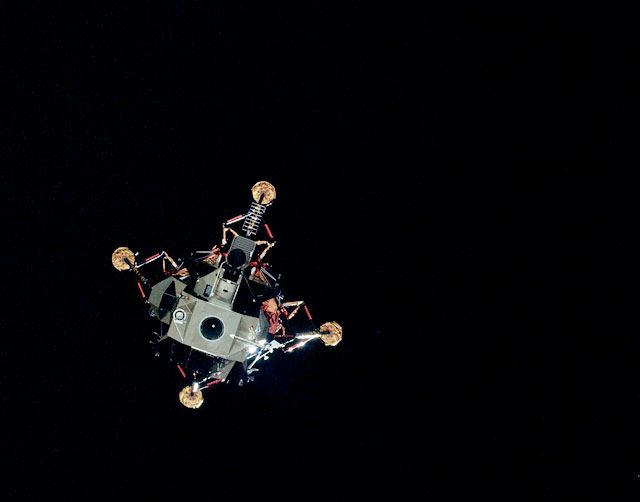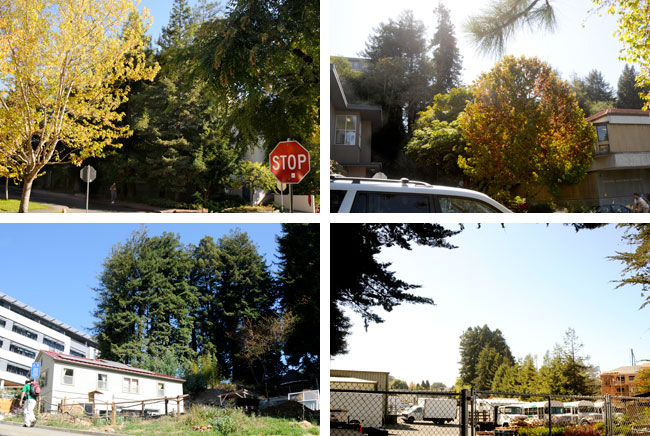
The truth is that these mystical plants do exist, and they’re all over Humboldt State’s campus.
On January 31, 1971, NASA launched the Apollo 14 lunar module and the ship’s three astronauts were allocated a certain amount of weight for personal items. Stuart Roosa, a former smoke jumper for the U.S. Forest Service, brought aboard some 500 seeds from five tree species, including redwoods. Alan Shepard famously brought along three golf balls and a makeshift club to later tee off on the surface of the moon.
Five days later Shepard and Edgar Mitchell walked on the Moon while Roosa remained in orbit in the command module. Roosa and his canister of seeds circled the moon 34 times as Shepard and Mitchell left their footprints in the lunar dust.
When the space shuttle returned, the seeds were gathered up by the U.S. Forest Service and NASA to be studied. “It was part science, part publicity stunt,” Stan Krugmen, a former U.S. Forest Service geneticist, told Science@NASA, the agency’s online news service.
The scientists were eager to test the germination of these seeds and record the effects of space travel on the plants, as at the time there were few studies on the effects of space on botanicals.
As a surprise to nearly everyone, almost all the seeds germinated successfully, and after a few years the Forest Service had close to 450 seedlings (some from cuttings). Some were planted with their earth-bound counterparts as controls, (as would be expected, after over 20 years there is no discernible difference) but most were given away in 1975 and 1976 to state forestry organizations to be planted as part of the nation’s bicentennial celebration.
Some of the seedlings arrived at HSU around 1976, according to retired HSU forestry professor Bill Sise. “There were hundreds of them just sitting in our greenhouse, and none of us knew what they were. We just thought they were regular trees and we didn’t know what to do with them all. I actually gave two of them away to a professor friend of mine from Sacramento State who needed seedlings. Neither of us knew until after they had been planted in Sutter
Creek that those two trees were moon trees.”
When asked what happened to all the moon trees that were given to HSU, Sise said, “They’re all over the place.” Actually, they can be found alongside the Theatre Arts building, behind Plant Operations, near CCAT and next to the forestry and natural resources buildings. There’s no way to know exactly which trees orbited the moon, as they’re growing alongside traditional redwoods and trees of other species. Sise continued, “We planted them all over campus, and since then, some have been ripped up for building purposes, with people not knowing what they are.”

Download a map of the campus moon trees (pdf)
Back in 1975 and ’76, with a few exceptions, no record was kept of where these trees were sent. Scientists do know that a loblolly pine was planted at the White House, and trees were planted in Brazil, Switzerland, and presented to the Emperor of Japan, among others. Trees have also been planted in Washington Square in Philadelphia, at Valley Forge, Pa., in Kansas’ International Forest of Friendship, and at various universities and NASA centers.
Over the last several years, Dave Williams of NASA has been collecting records of where the “moon trees” are now located. So far his count is incomplete, and HSU is listed as having only three trees—when in fact the campus is home to dozens. And Humboldt State is one of the few universities even listed as having been given the trees.
Sise reminisced about a plaque that used to sit on the three trees next to the Theatre Arts building. “We did have a plaque so that people would know where some of the moon trees were located, but kids living in the dorms kept stealing it and hanging it like a prize in their rooms. We finally just gave up trying to put it back up, and it’s been at least fifteen years since we’ve had that plaque there.”
Second-year art student Rose Ellis said, “I think it’s fantastic that we have something like this here on campus. It makes HSU that much more unique, and shouldn’t be such a secret to the students. The majority of people I know have no idea what they are or that we even have them.”